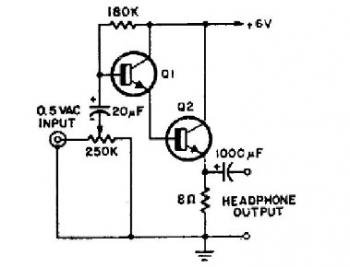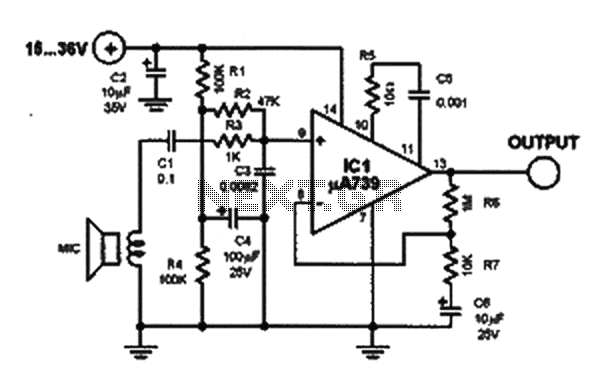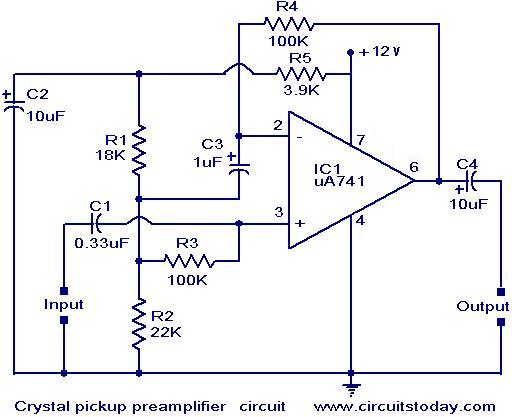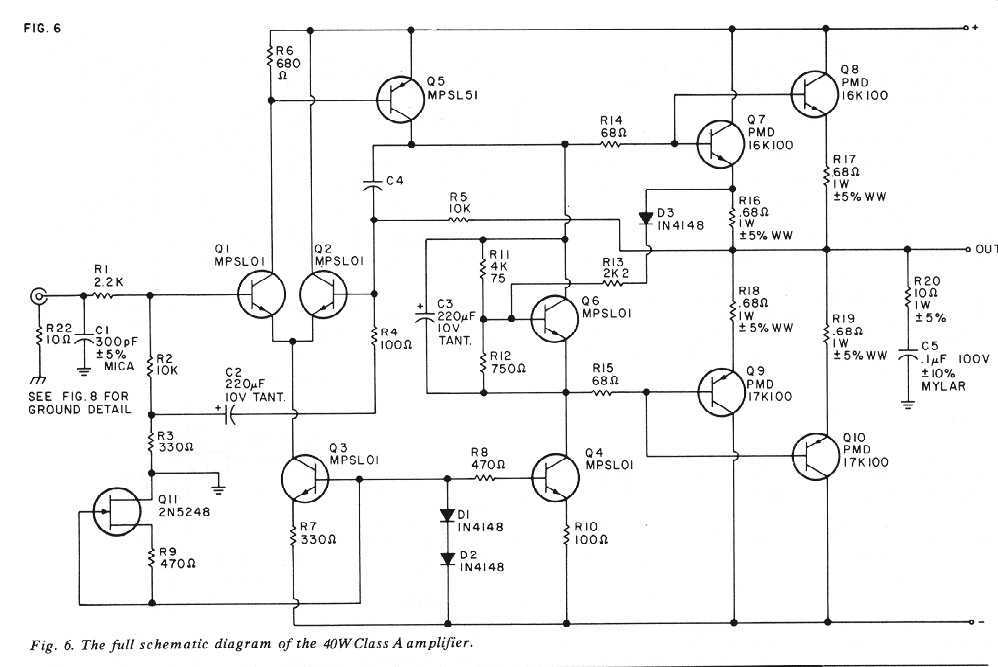
Stereo Tube Amplifier 4 Watts
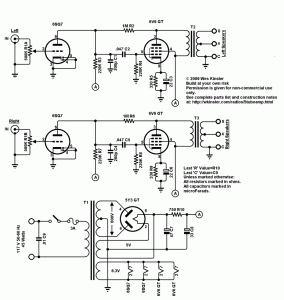
Stereo tube amplifier circuit built with 5 power tubes: 6SQ7-GT, 6V6-GT, and 5Y3-GT. This circuit generates up to 4 watts of audio output per channel.
The stereo tube amplifier circuit utilizes a combination of five power tubes, specifically the 6SQ7-GT, 6V6-GT, and 5Y3-GT, to achieve a warm and rich audio output. The 6SQ7-GT serves primarily as a dual triode amplifier, responsible for signal amplification and phase splitting. This tube is crucial for ensuring that the audio signal maintains clarity and fidelity during the amplification process.
The 6V6-GT power tubes are employed in the output stage of the amplifier. Known for their excellent linearity and low distortion characteristics, these tubes are capable of delivering up to 4 watts of output power per channel. This output is suitable for driving small to medium-sized speakers, providing a classic tube sound that is often described as smooth and musical.
The 5Y3-GT tube functions as the rectifier in the power supply section of the amplifier. It converts the alternating current (AC) from the power transformer into direct current (DC), which is necessary for the operation of the amplifier's circuit. The 5Y3-GT is renowned for its ability to produce a soft start-up characteristic, which helps to prolong the lifespan of the other tubes in the circuit.
The overall design of the amplifier circuit is likely to include a power transformer, output transformers, coupling capacitors, and various resistors to set the biasing and gain levels. Properly designed, the circuit will ensure that the audio output maintains a high signal-to-noise ratio and minimal distortion, resulting in an enjoyable listening experience.
This stereo tube amplifier circuit exemplifies the classic approach to audio amplification, combining vintage tube technology with modern design principles to deliver quality sound reproduction.Stereo tube amplifier circuit which is built based 5 power tubes of 6SQ7-GT, 6V6-GT and 5Y3-GT. This circuit generates up to 4 watts audio output each channel 🔗 External reference
The stereo tube amplifier circuit utilizes a combination of five power tubes, specifically the 6SQ7-GT, 6V6-GT, and 5Y3-GT, to achieve a warm and rich audio output. The 6SQ7-GT serves primarily as a dual triode amplifier, responsible for signal amplification and phase splitting. This tube is crucial for ensuring that the audio signal maintains clarity and fidelity during the amplification process.
The 6V6-GT power tubes are employed in the output stage of the amplifier. Known for their excellent linearity and low distortion characteristics, these tubes are capable of delivering up to 4 watts of output power per channel. This output is suitable for driving small to medium-sized speakers, providing a classic tube sound that is often described as smooth and musical.
The 5Y3-GT tube functions as the rectifier in the power supply section of the amplifier. It converts the alternating current (AC) from the power transformer into direct current (DC), which is necessary for the operation of the amplifier's circuit. The 5Y3-GT is renowned for its ability to produce a soft start-up characteristic, which helps to prolong the lifespan of the other tubes in the circuit.
The overall design of the amplifier circuit is likely to include a power transformer, output transformers, coupling capacitors, and various resistors to set the biasing and gain levels. Properly designed, the circuit will ensure that the audio output maintains a high signal-to-noise ratio and minimal distortion, resulting in an enjoyable listening experience.
This stereo tube amplifier circuit exemplifies the classic approach to audio amplification, combining vintage tube technology with modern design principles to deliver quality sound reproduction.Stereo tube amplifier circuit which is built based 5 power tubes of 6SQ7-GT, 6V6-GT and 5Y3-GT. This circuit generates up to 4 watts audio output each channel 🔗 External reference
